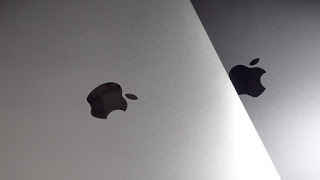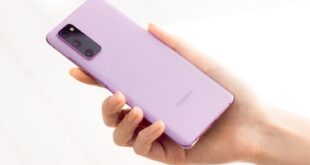The ZenFone 3 Laser is one of the cheapest smartphones in the Asus Zenfone 3 series, but not really cheap
enough when compared to its actual competition. So how well it fares? Find it out in our review.
he Taiwanese smartphone manufacturer, Asus, introduced the Zenfone 3 series in India back in August in order to ‘Z3nvolutionalise’ the
country. The Zenfone 3 series include six different devices that offer different specs at different price points. Amongst the six smartphones launched, the lighter on the pocket of the consumers has been the Zenfone 3 Laser which starts at Rs 18,999.
Easy on the eye without being blingy
The Zenfone 3 Laser sports a 5.5-inch full HD display topped with Gorilla Glass Protection. The device is available in two different color variants and our review unit was Sand Gold in color. The
smartphone possesses a metal unibody design and is easy on the eyes without being too blingy at the same time. The front of the smartphone sports the
earpiece, front camera and the proximity sensor on the top, and there are three capacitive buttons right below the screen. Asus has avoided going
with the physical home button option with the Laser because of which there are not any bumps on the front of the device.
The 3.5 mm audio jack has been placed on top of the smartphone whereas, on the opposite side, the company has arranged the speaker grille and the
MicroUSB port (no USB Type-C on this one, unlike the ZenFone 3). The volume rockers and the power/lock buttons are placed on the right-hand side while the hybrid SIM card slot pops out from
the left. Although the company has made a bump-free front, that isn’t the case with the back. The rear of the phone sports two beautiful shiny metal
finished antenna bands on top and bottom, and of course also carries the camera. The primary camera of the phone resides just below the antenna on the top with the laser autofocus (from where the phone gets its name) on its left and dual LED flash on the right. And it stands out (quite literally) – the rear camera of the device bulges out a bit which may worry some as it can
pick up scratches easily in the longer run. But the back is not just about the camera. The smartphone sports a super-fast fingerprint sensor which is placed just below the camera. Very subtly, Asus
has placed the logo of the company just above the antenna band on the base in a dark grayish color. The smartphone measures 149x76x7.9 mm and weighs 150 grams, which is not the lightest but does not feel like carrying a brick around in the pocket either.
Snapdragon 430…not quite snappy, really
Zenfone 3 Laser is powered by a 1.4 GHz octa- core 64-bit Qualcomm Snapdragon 430 chipset which might come as a disappointment to some
because there are other devices offering
Snapdragon 650 processors or even the flagship- level 820 at the same price or around it. We did not face any lag-blues while working our way through the usual multi-tasking. It was a cakewalk
to switch between social networking applications to messaging or the phone app for example. But the Snapdragon 430 obviously falls short in the gaming department, a problem which could not be solved even by the presence of 4GB LPDDR3 RAM and Adreno 505 graphics. Although games like Colour Switch, Candy Crush and Temple Run worked just fine on the smartphone, the device
had major lagging issues with heavy games like Asphalt Extreme, Asphalt 8 and NFS No Limits, which explains the relatively low AnTuTu score of the device. Thus, the Laser is definitely not the device for hard-core gamers (the struggle of working your way around these games is just not worth it) but the casual high-score hunters can give it a go.
Along with 4 GB RAM, the handset offers 32 GB internal storage which can be expanded up to 128 GB via MicroSD card. And if that is not enough storage for you, Asus also provides 100 GB of
cloud storage for two years on Google Drive.
Laser lock and load camera, superb battery
As the camera is the USP of the Zenfone 3 Laser, we had to give it the most attention. The primary camera comes with a 13-megapixel sensor with f/2.0 aperture, dual LED real-tone flash and laser auto-focus which can focus in 0.03 seconds as per the company. The camera of the device produced some very good shots when provided with
sufficient light. In low light, the camera
automatically brightens up and provides us images with eye-popping colors which can be a little unrealistic. The laser feature did not really disappoint us – we managed to lock focus in split seconds and clicked some shots with remarkable detailing. Having said that, we thought that the camera was a little slow in processing images once we had clicked them, which is a bit of a pity when the camera is the USP of the device. The camera app offers a number of modes including HDR Pro, Beautification, Super Resolution, Low- light, QR Code, Night, Depth of field, Effect, Selfie, GIF animation, Panorama, Miniature, Time rewind, Slow motion, and Time Lapse which are consistent in all the phones in the Zenfone 3 series. The handset comes with an 8-megapixel front camera, which delivered pretty good shots in a well-lit environment. Using the front camera can be a confusing ride as the camera app seems to go all over the place – as soon as we opened the front camera, the beautification mode turned on automatically which made us look like a totally different person (and not necessarily a better looking one either). This can be a pain for those who like a plain- simple point and shoot selfie experience. The 5.5-inch display produced beautiful colors and did not really over saturate the warm colors (the reds, the oranges, the pinks, et al). Although the display is a fingerprint magnet, it comes across as bright enough. The battery has to be one of the best features of the Zenfone 3 Laser. The device comes with 3000 mAh non-removable battery which lasts a day easily with normal/ heavy usage. Charging the device fully takes around 3-4 hours which can be a little too much for some in this era of Dash Charge, Quick Charge and the like.
A not so “Zen” UI
The smartphone runs on Android Marshmallow 6.0 out of the box topped with Zen UI 3.0. The Zen UI 3.0 kind of makes the whole experience a roller coaster ride, with more downs than ups.
The interface offers just too many apps which gave us two screens full of apps we didn’t really need. Some users might like the idea of getting apps already on the phone but it was just a little too overwhelming for us. Asus needs to simplify the UI because it can be very confusing for the ones using it for the first time – we had been told that the company was trying to keep the UI close
to stock Android at the Zenfone 3 briefing, but that has clearly not happened yet.
Conclusion: this Laser does not quite “cut” it The Laser series by the Taiwanese company has over the time spoilt us by offering good quality cameras at a comparatively lower price. The price is higher this time around, but while the device has scored well on the camera and the battery front, we feel it couldn’t really step it up in terms of performance – blame it on the processor perhaps. The Asus Zenfone 3 Laser scores a few brownie points but will find the going tough against the likes of the Lenovo Z2 Plus and Le Eco Le Max 2 which offer the top notch Qualcomm Snapdragon 820 processor at a similar price. We think the Laser definitely has its task ‘cut’ out when it comes to giving other phones in its price segment some stiff competition.




